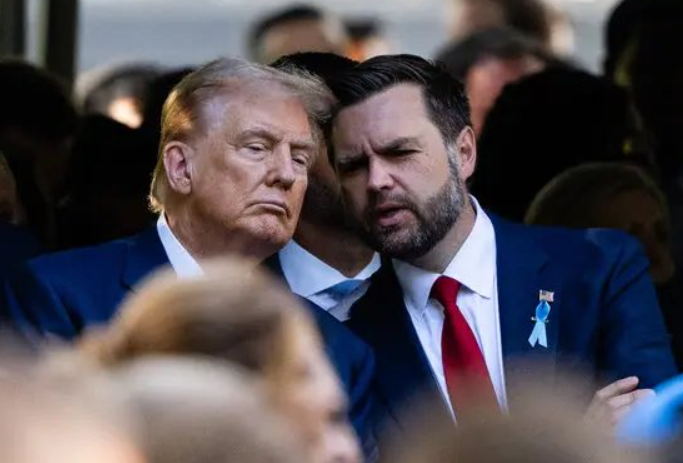How Trump Planned the Attack on Iran:In a detailed interview, U.S. Vice President J.D. Vance explains how President Trump made the final decision to launch a military strike on Iran’s nuclear facilities on June 22. The blog covers the exact timeline of the attack, the damage inflicted on key Iranian nuclear sites, and the ongoing conflict between the U.S., Iran, and Israel. Get full details on how the operation unfolded and what it means for global security.
How Trump Planned the Attack on Iran
On the night between June 21st and 22nd, a significant chapter unfolded in the escalating tensions between the United States and Iran. Despite weeks of fiery rhetoric and repeated warnings from President Donald Trump, no one knew exactly when or if the U.S. would strike. But on June 22, the decision was made. The question remains: when exactly did Trump authorize this strike, and could it have been avoided?
America’s Vice President J.D. Vance answered these questions in a revealing interview with NBC News, shedding light on the critical moments leading up to the attack and its aftermath.
According to Vice President Vance, the U.S. had always preferred diplomacy over war. “We never wanted this fight; we want peace,” Vance said. “But peace comes with a condition — Iran must not develop a nuclear program.” Vance emphasized that the U.S. did not spoil diplomatic efforts but blamed Iran for missing opportunities to de-escalate.
When asked about the precise moment President Trump authorized the strike, Vance disclosed that the final decision was made just moments before the bombs were dropped. “President Trump’s objective was crystal clear — to destroy Iran’s nuclear program,” he stated. “He personally decided that the attack was necessary. He had the power to halt it even at the last second but chose not to. I believe we made the right decision for the safety of Americans.”
The interviewer further questioned Vance on whether the Iranian nuclear program was completely destroyed. In response, Vance asserted, “We are confident that we have significantly disrupted Iran’s nuclear program. That was the primary objective of our strike. What happens next is entirely up to Iran.”
Soon after the attack, on the morning of June 22nd, President Trump released a video statement confirming that the United States had targeted three key Iranian nuclear sites: Fordow, Natanz, and Isfahan. These facilities were chosen because they allegedly housed nuclear activities considered highly dangerous by the U.S. and its allies.
Trump stated that the strikes were executed with precision and caused massive damage to the facilities. Later that day, he posted on social media praising the U.S. Air Force’s B-2 bomber pilots, thanking them for a successful mission and confirming that they had landed safely in Missouri after completing the operation.
Further underlining the extent of the damage, President Trump shared satellite images on June 23rd, showing the destruction inflicted on the Iranian sites. “The word devastation is appropriate here,” Trump wrote. He described one of the destroyed structures as being deeply embedded into a rock formation, with even its roof situated well below ground level, previously designed to be impervious to attack. However, according to Trump, even these fortified underground structures suffered heavy damage.
The backdrop to this dramatic U.S. strike traces back to earlier developments. On the night between June 12th and 13th, Israel had already launched attacks on Iranian positions. In retaliation, Iran initiated Operation True Promise III, leading to continuous back-and-forth strikes between Israel and Iran.
Throughout these escalations, the U.S. consistently expressed strong opposition to Iran’s nuclear program and repeatedly warned of potential military action. After multiple warnings and heightened tensions, the U.S. finally struck on June 22, targeting Iran’s critical nuclear infrastructure.
As this high-stakes conflict continues to evolve, all eyes remain on the responses from Iran and the broader international community. The situation remains volatile, with global powers closely monitoring every development. We will keep providing timely updates on this ongoing conflict.
Disclaimer:
This article is based on publicly available reports and official statements. The information presented here is for informational purposes only and does not represent any personal, political, or organizational opinion. Readers are advised to follow official government sources for the latest and most accurate updates.

